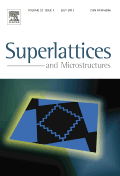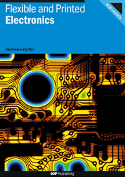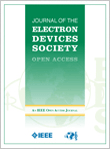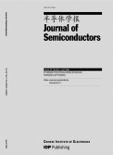
Advanced Electronic Materials
Scope & Guideline
Connecting Researchers to Transformative Material Discoveries
Introduction
Aims and Scopes
- Material Innovations for Electronics:
The journal highlights advancements in new materials such as 2D materials, organic semiconductors, and hybrid systems that are critical for the development of next-generation electronic devices. - Device Engineering and Applications:
Research pertaining to the design, fabrication, and application of electronic devices, including transistors, sensors, and memory devices, is a core focus, particularly those utilizing novel materials. - Neuromorphic Computing and Memory Technologies:
The journal emphasizes the development of neuromorphic devices, memristors, and other memory technologies that mimic biological processes, aiming for efficient computation and data storage. - Sustainable and Flexible Electronics:
Sustainability in electronics is a growing theme, with research on biodegradable materials, flexible substrates, and environmentally friendly fabrication methods being increasingly featured. - Optoelectronic Devices:
The journal covers research on optoelectronic devices, including photodetectors, light-emitting diodes, and solar cells, focusing on their material properties and performance enhancements.
Trending and Emerging
- 2D Materials and Heterostructures:
The exploration of 2D materials, such as graphene and transition metal dichalcogenides, is rapidly increasing, driven by their unique electronic, optical, and mechanical properties that enable novel device applications. - Neuromorphic Computing and Artificial Intelligence:
There is a marked increase in research related to neuromorphic computing, with devices designed to mimic neural functions and facilitate machine learning applications being a major focus. - Flexible and Wearable Electronics:
The development of flexible and wearable electronic devices is gaining traction, emphasizing materials and designs that accommodate bending, stretching, and skin-like applications. - Hybrid Organic-Inorganic Systems:
Research on hybrid systems that combine organic and inorganic materials is trending, aiming to leverage the strengths of both classes for improved device performance. - Sustainable and Biodegradable Materials:
The push for sustainability is reflected in the growing body of work focused on biodegradable and eco-friendly materials for electronics, aiming to reduce environmental impact.
Declining or Waning
- Traditional Silicon Electronics:
As the field shifts towards new materials and paradigms, traditional silicon-based electronics are receiving less attention, with researchers exploring alternatives like 2D materials and organic semiconductors. - Passive Electronic Components:
Research on passive components, such as resistors and capacitors, has diminished as the focus moves towards active components that contribute to advanced functionalities in neuromorphic and flexible electronics. - Conventional Photovoltaic Technologies:
Interest in traditional photovoltaic technologies has waned in favor of innovative solutions like perovskite solar cells and other next-generation materials that promise higher efficiency and lower costs. - Bulk Material Studies:
There has been a shift away from bulk material studies towards more intricate investigations of nanoscale and interface phenomena, which are deemed more relevant for modern applications. - Single-Function Devices:
The trend is moving away from devices designed for single functions towards multifunctional devices that can perform multiple tasks, such as sensing, computing, and data storage in a single platform.
Similar Journals

JOURNAL OF OPTOELECTRONICS AND ADVANCED MATERIALS
Driving Excellence in Optoelectronics and Material ScienceJOURNAL OF OPTOELECTRONICS AND ADVANCED MATERIALS, published by the NATL INST OPTOELECTRONICS in Romania, is an esteemed academic journal dedicated to disseminating innovative research in the fields of optoelectronics and advanced materials. With an ISSN of 1454-4164 and E-ISSN 1841-7132, the journal provides a platform for researchers to share their findings and technological advancements from 1999 to 2024. Despite being placed in the Q4 quartile across several categories—including Atomic and Molecular Physics, Condensed Matter Physics, and Electrical and Electronic Engineering—the journal serves as an essential resource for highlighting significant developments in its respective fields. Researchers and professionals may find valuable insights that foster collaboration and inspire further investigation, thereby contributing to the continuous evolution of optoelectronics and materials science.

SUPERLATTICES AND MICROSTRUCTURES
Advancing the frontiers of materials science.SUPERLATTICES AND MICROSTRUCTURES is a premier journal dedicated to the exploration and dissemination of cutting-edge research in the fields of Condensed Matter Physics, Electrical and Electronic Engineering, and Materials Science. Published by Academic Press Ltd - Elsevier Science Ltd, this journal has established itself as an important platform for scholars and industry professionals to share their findings related to the design, fabrication, and application of superlattices and microstructured materials. With a commendable impact factor reflected in its rankings—positioned within the top quartile in Physics and Astronomy as well as Electrical and Electronic Engineering—it offers high visibility and influence in the academic community. The journal has covered significant contributions from 1985 to 2022, although access options have transitioned, making staying current essential for researchers and practitioners alike. This journal not only serves as a repository of knowledge but also fosters collaboration and innovation in materials science and related disciplines.

Flexible and Printed Electronics
Advancing the Future of Flexible ElectronicsFlexible and Printed Electronics, published by IOP Publishing Ltd, is a leading journal dedicated to advancing the field of flexible and printed materials within the realm of electrical and electronic engineering. With an impressive Q2 ranking in both Electrical and Electronic Engineering and Electronic, Optical, and Magnetic Materials, this journal is recognized for its significant contributions to the understanding and application of innovative electronic devices and systems. Covering a wide array of topics from materials science to engineering applications, it serves as a vital resource for researchers, professionals, and students alike. The journal's rigorous peer-review process and commitment to high-quality publications ensure that readers are exposed to cutting-edge research and developments. Submissions are welcomed from global contributors, providing a platform for the dissemination of groundbreaking ideas and technologies. With its impressive impact in the academic community, Flexible and Printed Electronics is poised to influence the future of electronics and materials technology.

ACS Applied Electronic Materials
Elevating the Standards of Materials ChemistryACS Applied Electronic Materials, published by the American Chemical Society, is a prominent journal in the field of applied materials science, with a particular focus on electronic, optical, and magnetic materials. Established in 2019, this journal has quickly risen to prominence, achieving a 2023 ranking of Q1 in both Electronic, Optical and Magnetic Materials and Materials Chemistry, as well as Q2 in Electrochemistry, reflective of its high-quality contributions and significant impact within the scholarly community. With an impressive Scopus rank of #22 in Electrochemistry, #59 in Electronic, Optical and Magnetic Materials, and #75 in Materials Chemistry, ACS Applied Electronic Materials serves as an essential resource for researchers, professionals, and students seeking to explore innovative advancements in the field. While the journal is not open access, it offers robust subscription options and aims to foster the dissemination of cutting-edge research articles, reviews, and technical notes that contribute to the understanding and application of electronic materials in various technological contexts. As a platform for pioneering research and cross-disciplinary dialogue, this journal is indispensable for anyone invested in the future of materials science.

ORGANIC ELECTRONICS
Unveiling Breakthroughs in Organic ElectronicsORGANIC ELECTRONICS, published by Elsevier, is a premier journal dedicated to the rapidly evolving field of organic electronics, encompassing a spectrum of interdisciplinary research from materials chemistry to electrical engineering. As a crucial resource for researchers, professionals, and students, the journal boasts significant impact, currently ranked in the Q2 category across multiple fields, including Condensed Matter Physics, Materials Chemistry, and Electrical and Electronic Engineering. With a commitment to advancing knowledge and innovation from its base in the Netherlands since its inception in 2000, ORGANIC ELECTRONICS not only provides critical insights into organic materials and their applications but also fosters collaboration among scientists through its comprehensive findings and high-quality articles. The journal does not currently offer open access but provides various access options for subscribers. With its HIndex signaling substantial academic output and engagement, ORGANIC ELECTRONICS remains an essential platform for groundbreaking research that is shaping the future of technology.

SOLID-STATE ELECTRONICS
Connecting Academia and Industry through Solid-State ResearchSOLID-STATE ELECTRONICS, published by Pergamon-Elsevier Science Ltd, is a highly regarded journal committed to advancing the field of solid-state physics and its applications. With an ISSN of 0038-1101 and an E-ISSN of 1879-2405, this journal has been a cornerstone of scholarly communication since its inception in 1960. Covering a rich spectrum of topics, it features in the Q3 category for Condensed Matter Physics, Electrical and Electronic Engineering, and Materials Science, reflecting its robust engagement in these critical fields. Despite not being an open-access journal, it provides valuable insights and research findings accessible to both academia and industry professionals, ensuring the dissemination of cutting-edge knowledge. With a strong focus on empirical research and theoretical developments, SOLID-STATE ELECTRONICS aims to bridge the gap between fundamental science and practical application, making it an essential resource for researchers, professionals, and students alike in the United Kingdom and beyond.

IEEE Journal of the Electron Devices Society
Illuminating the Path of Electron Device InnovationIEEE Journal of the Electron Devices Society is a premier open-access publication dedicated to the advancement of knowledge in the field of electron devices. Published by the IEEE Institute of Electrical and Electronics Engineers Inc, this journal has been contributing essential research to the scientific community since 2013, reflecting its commitment to fostering innovation and development in the industry. With a notable impact factor that places it in reputable category quartiles—Q3 in Biotechnology and Q2 in both Electrical and Electronic Engineering and Electronic, Optical, and Magnetic Materials—this journal stands as a respected outlet for cutting-edge studies. Positioned among the top-ranked journals in its respective categories, including a Scopus rank of #90 in Electronic, Optical and Magnetic Materials, it serves as a vital resource for researchers, professionals, and students alike. The open-access model enhances the journal's accessibility, allowing for widespread dissemination of crucial findings and innovations in electron device technologies. Whether you are engaged in academia or industry, the IEEE Journal of the Electron Devices Society is essential for remaining at the forefront of advancements in this dynamic field.

InfoMat
Advancing Materials Science Through Open Access InnovationInfoMat is a premier open-access journal published by WILEY that serves as a vital resource for scholars and practitioners in the fields of materials science, materials chemistry, and related disciplines. Since its inception in 2019, this journal has rapidly ascended in academic stature, currently holding a prestigious Q1 ranking across multiple categories, including Electronic, Optical and Magnetic Materials, Materials Chemistry, and Surfaces, Coatings and Films, showcasing its significant impact and relevance. With a commendable impact factor and a comprehensive scope, InfoMat provides a platform for high-quality research that drives innovation in the materials domain, appealing to researchers, professionals, and students alike. The journal’s open-access model enhances visibility and accessibility of cutting-edge studies, fostering a collaborative and informed scientific community. Based in the United Kingdom, InfoMat continues to shape the future of materials research through its commitment to excellence and accessibility.

Journal of Semiconductors
Exploring the frontiers of electronic and optical materials.Journal of Semiconductors, published by IOP Publishing Ltd in the United Kingdom, is a leading scholarly journal that has established itself as a premier platform for disseminating high-quality research in the fields of condensed matter physics, electrical and electronic engineering, and materials chemistry. Since its inception in 2009, the journal has featured research articles that delve into the fundamental and applied aspects of semiconductor technologies, making significant contributions to advancements in electronic, optical, and magnetic materials. The journal boasts an impressive Q1 ranking in several categories, including Condensed Matter Physics and Electronic, Optical and Magnetic Materials, reflecting its influential role in shaping contemporary research. With a dedicated audience of researchers, professionals, and students, it aims to foster collaboration and innovation in this dynamic field. Although it operates under a traditional access model, the journal offers various publication options that ensure the visibility and impact of its articles. Through its rigorous peer-review process and commitment to excellence, the Journal of Semiconductors continues to be an invaluable resource for those seeking to stay at the forefront of semiconductor research and technology.

Journal of Science-Advanced Materials and Devices
Advancing Materials Science Through Open Access InnovationJournal of Science-Advanced Materials and Devices is a leading open-access journal published by Vietnam National University, dedicated to advancing the field of materials science through cutting-edge research and innovative developments. Since its inception in 2016, this journal has become a pivotal platform for sharing insights and discoveries in various subfields, including biomaterials, ceramics and composites, and electronic, optical, and magnetic materials. With impressive quartile rankings, including Q1 across multiple categories in 2023, and a notable Scopus ranking placing it in the top 15th percentile for ceramics and composites, it highlights the journal’s influence and prestige within the global academic community. Open Access since its launch, the journal aims to facilitate unrestricted dissemination of scholarly work, empowering researchers, professionals, and students to engage with the latest advancements. The Journal of Science-Advanced Materials and Devices is vital for those seeking high-quality contributions that influence both theoretical understanding and practical applications in the ever-evolving landscape of materials science.